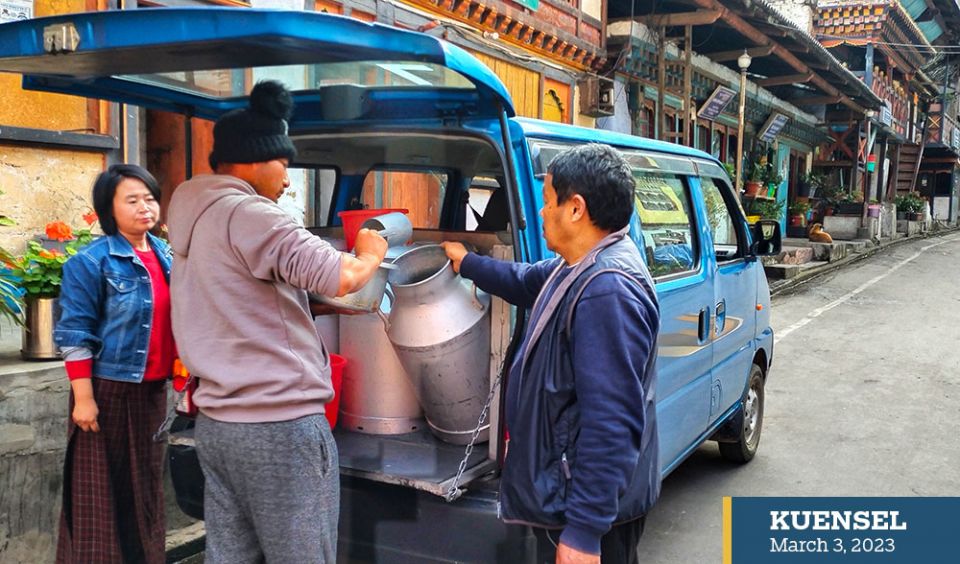
… farmers complain of rising costs and falling production
While the Trashigang dzongkhag has achieved self-sufficiency in milk production, dairy farmers say it will be difficult to maintain the status with rising feed costs.
The price of livestock feed has risen by Nu 1,500 to Nu 1,850 since late 2020, inflicting heavy losses on dairy farmers. Farmers also claim that they suspect contamination of cattle feed.
A dairy farmer from Trashigang Pam, Pema Wangchuk, said, “I have raised five cattle. The price of feed has gone up from Nu 1,500 a bag two years ago to Nu 1,850 now.”
While the price of milk has also increased, farmers said production has dropped possibly due to poor quality of feed.
Pema Wangchuk said most dairy farmers are forced to cut back the animals’ feed as it has become costly.
Another farmer, Sherub Pema has stopped giving commercial feed since she could not afford them.
“Because of higher prices, we either have to cut the feed and risk lower production, or pay sky-high prices,” said Sherub Pema.“Both options are hurting us.”
A jersey cow gives an average of 20 to 30 litres of milk in a day when they are fed with a quality feed. However, in absence of such feed, farmers hardly get five litres of milk.
“It used to be a profitable venture, but right now we don’t have much but incur losses,” said Galay Wangchuk, a dairy farmer from Trashigang Pam.
“If the government or any livestock agencies could open one dedicated feed mill factory in the east, it would help eastern dzongkhags,” he said.
He said with support from the dzongkhag livestock sector, most of the dairy farmers grow fodder in their respective areas. “But farmers prefer feed than fodder since it doesn’t involve much work.”
A dairy farmer who has been in the dairy business for 15 years in Gongthung, Kinley said, “It is almost impossible to run a cattle farm as even milk prices did not increase the way feed did.”
He said most of the dairy farmers are losing interest in the dairy business because it is becoming expensive and there are other challenges.
Pema Lhadon, another farmer from Gongthung has switched from feed to fodder.
“All of my money from milk sales went into buying feed. If this situation continues, many farmers will have no option but to close the farm.”
She sold about five jersey cows recently. She said jersey cows are not like other cattle, they need to eat a balanced diet in order to stay healthy and produce milk.
Farmers are worried about how they will repay their loans. “I don’t see any opportunities to repay the loan,” she said.
Samkhar, Yangnyer, and Kanglung gewogs produce more milk than other gewogs.
A 48-year-old farmer, Lama Dorji from Bikhar said that farmers are trying to make animals feed, but it was challenging to get all the ingredients.
Agents of Karma Feed in Trashigang said that feed price has increased due to the increase in the price of raw materials that are imported from India.
“Compared to the past, farmers do not buy as much feed because feed price has increased,” said an agent.
Meanwhile, dairy farmers say that the feed plant established at Kanglung has not been of much help. It was established in 2015 as a public-private partnership project.
The dzongkhag administration does not have plans to open new feed mills.












